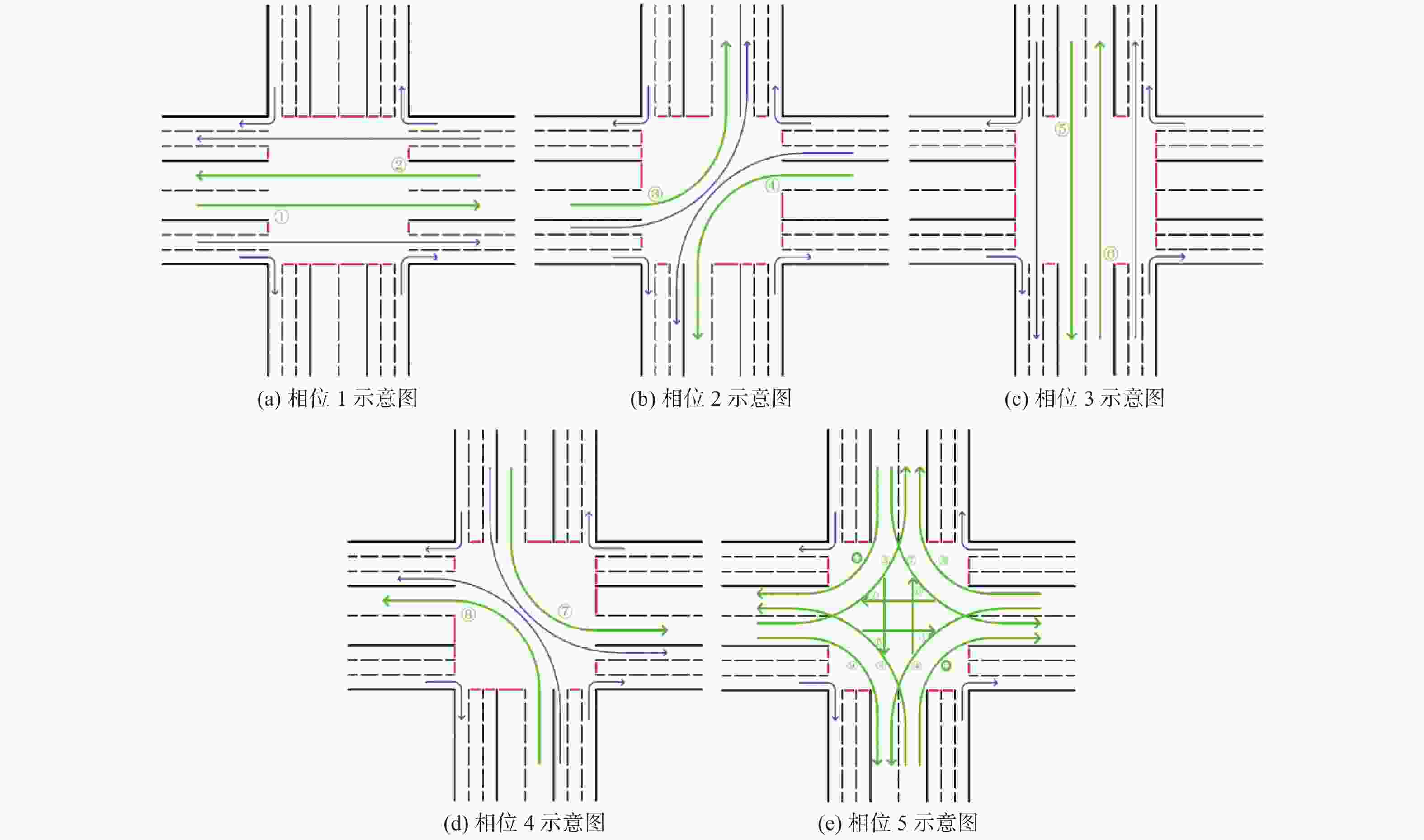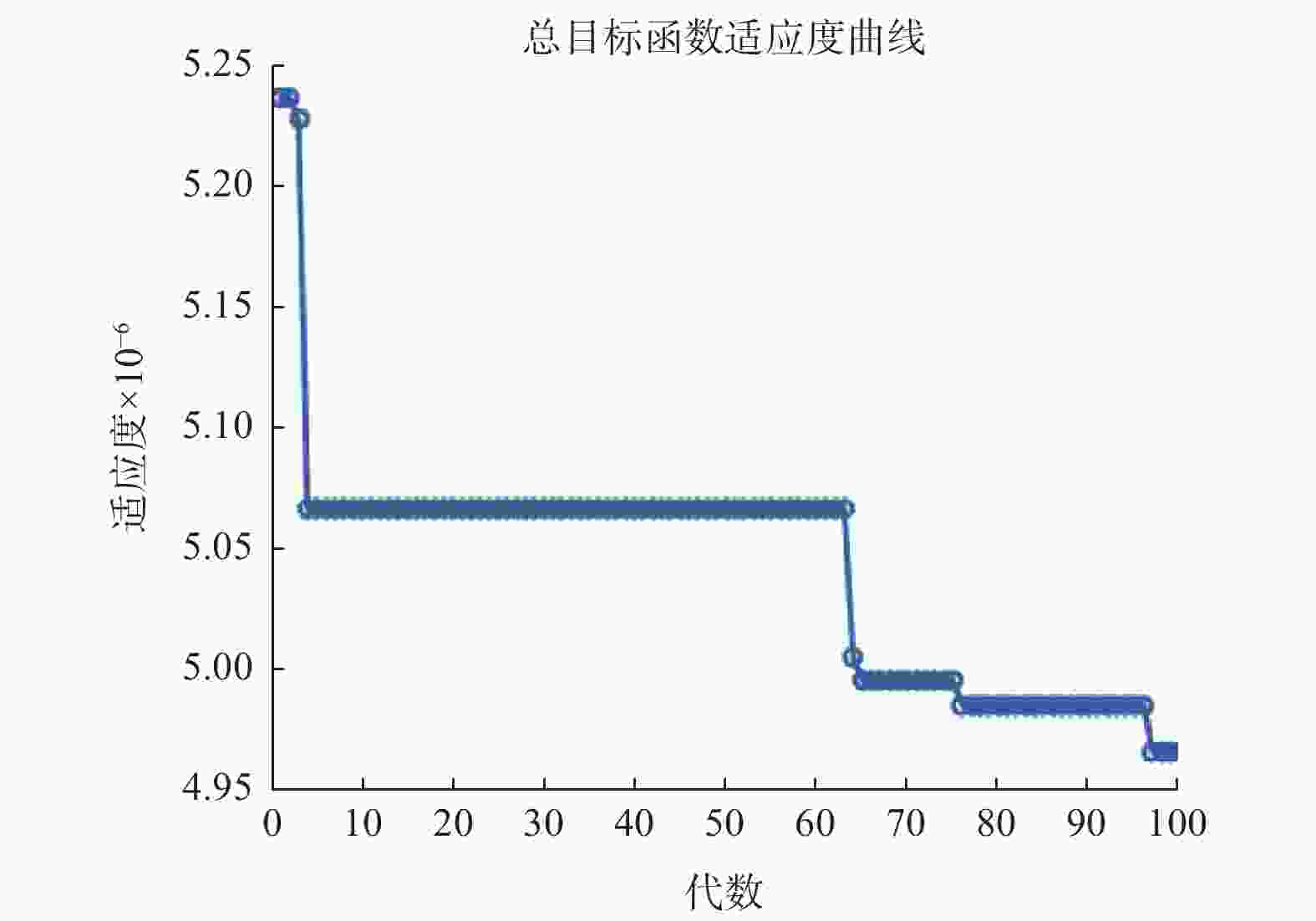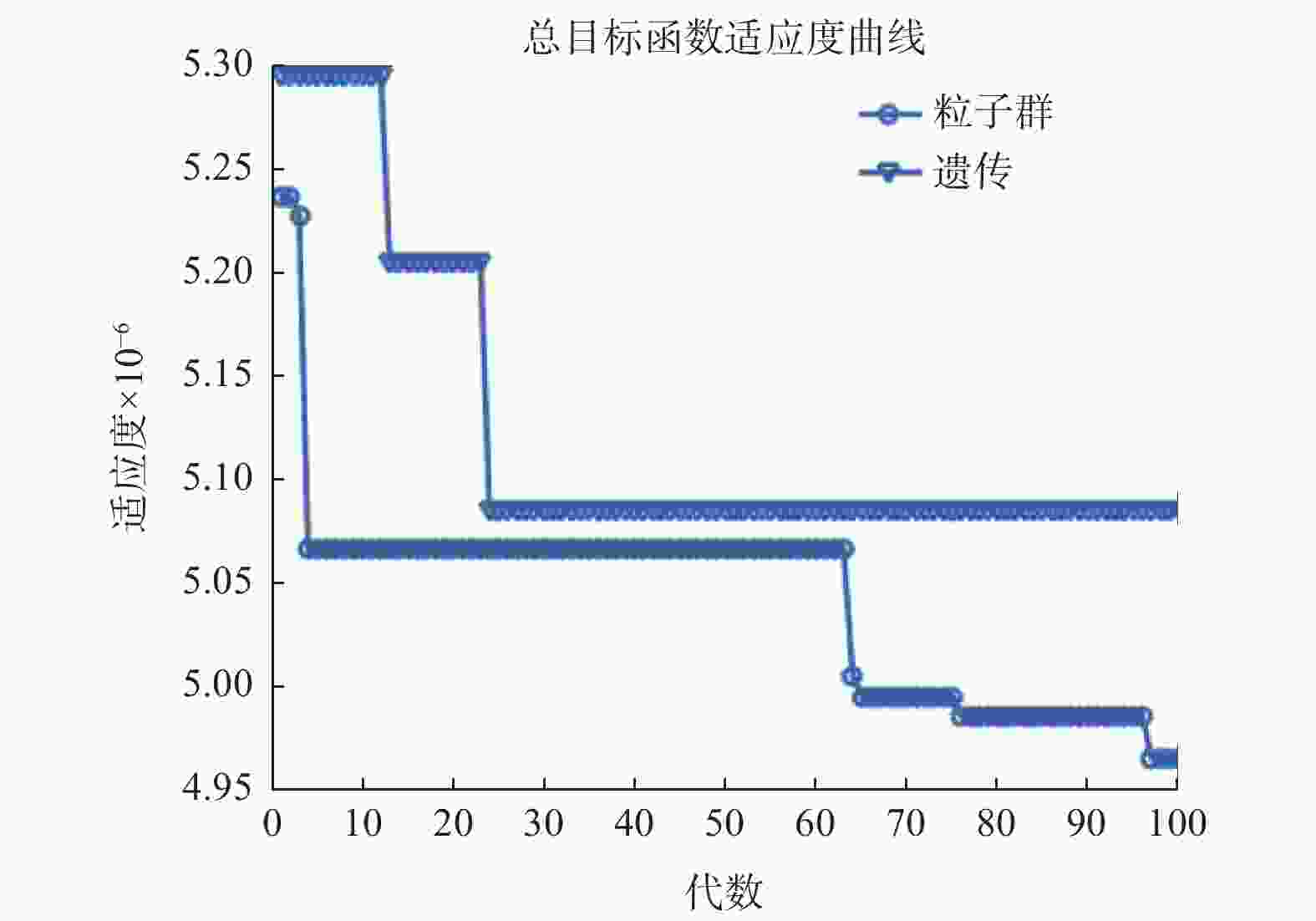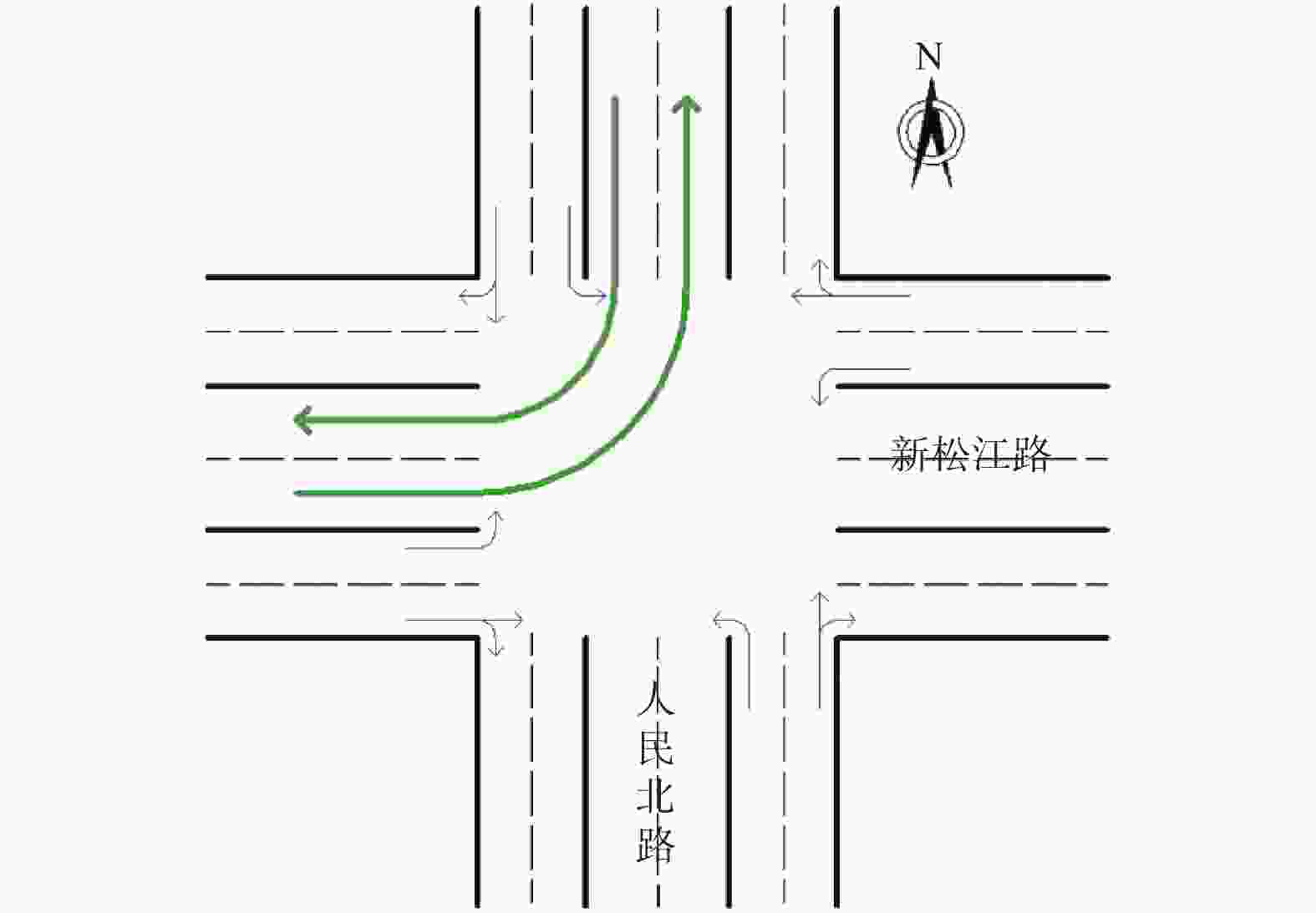Research of streetcar intersection signal control based on improved particle swarm algorithm
-
摘要:
有轨电车易受到道路环境的影响,而交叉道口作为城市道路通行能力的瓶颈,制约着整个路网的通行效率. 建立最优化问题模型,分析改进粒子群算法,利用基于灾变自适应的粒子群算法对有轨电车介入的交叉道口信号配时进行分析. 以上海市松江区有轨电车实际单点交叉道口为研究对象,通过模拟仿真,获得该交叉道口的最优信号相位分配方案,该方案能够降低有轨电车对道路拥堵的影响值.
Abstract:Streetcars are easily affected by road environment. The intersection, as the bottleneck of road capacity, restricts the traffic efficiency of the whole road network. An optimization problem model was established, the improved particle swarm algorithm was analyzed, and the particle swarm algorithm based on catastrophic adaptation was used to analyze signal timing of streetcar intersection. Taking the actual single point intersection of streetcar in Shanghai Songjiang as research object, the optimal signal phase distribution plan of the intersection was obtained through simulation, which can reduce the impact of streetcars on road congestion.
-
Key words:
- streetcar /
- intersection /
- signal timing /
- particle swarm algorithm
-
表 1 灾变基本形式
Table 1. Basic form of catastrophe
灾变形式 势函数 折迭型 $ {x^3} + ux $ 尖点型 $ c{x^4} + u{x^2} + vx $ 燕尾型 $ {x^6} + u{x^3} + v{x^2} + wx $ 蝴蝶型 $ {x^6} + t{x^4} + u{x^3} + v{x^2} + wx $ 椭圆脐型 $ {x^3} + {y^3} + wxy - ux - vy $ 双曲脐型 $ \dfrac{1}{3}{x^3} - x{y^2} + w ( {{x^2} + {y^2}}) - ux + vy $ 抛物脐型 $ {y^4} + {x^2}y + w{x^2} + t{y^2} - ux - vy $ 表 2 粒子群算法结果
Table 2. Results of particle swarm algorithm
字段 值 Best_x [77,25,73,27,48] Best_fit 4965750 detail 1x1 struct 表 3 单点交叉道口粒子群算法结果
Table 3. Rresults of particle swarm optimization at single point intersection
字段 值 Best_x [18,26,19,81,36] Best_fit 1054914 detail 1x1 struct -
[1] 李凯, 毛励良, 张会, 等. 现代有轨电车交叉口信号配时方案研究[J] . 都市交通快轨,2013,26(2):104 − 107. [2] 潘琢, 曾蓉娣. 现代有轨电车交叉口延误时间计算原理[J] . 数学的实践与认识,2017,47(17):152 − 159. [3] CURRIE G, SHALABY A. Active transit signal priority for streetcars: Experience in Melbourne, Australia, and Toronto, Canada[J] . Transportation Research Record Journal of the Transportation Research Board,2008,2042:41 − 49. doi: 10.3141/2042-05 [4] 李瑞敏, 陆化普. 基于遗传算法的交通信号控制多目标优化[J] . 长安大学学报(自然科学版),2009,29(3):85 − 88. [5] 董超俊, 刘志勇, 邱祖廉. 灾变粒子群优化算法及其在交通控制中的应用[J] . 计算机工程与应用,2005,41(29):19 − 23. doi: 10.3321/j.issn:1002-8331.2005.29.006 [6] 陈玉江, 王敏, 罗聪. 有轨电车优先的固定信号配时优化模型[J] . 交通运输研究,2006,2(1):8 − 16. [7] 王辉, 朱龙彪, 朱天成, 等. 基于粒子群遗传算法的泊车系统路径规划研究[J] . 工程设计学报,2016,23(2):195 − 200. doi: 10.3785/j.issn.1006-754X.2016.02.014 [8] 葛景璞. 基于灾变粒子群算法的电网无功规划的研究[D]. 北京: 华北电力大学, 2007. [9] 陈占伟, 李骞. 一种自适应惯性权重的粒子群优化算法[J] . 微电子学与计算机,2011,28(3):27 − 30. [10] 万善余, 范迪. 基于遗传算法的信号灯配时[J] . 电子科技,2017,30(3):49 − 52. [11] 刘克虎, 宿亚军, 苏浚. 现代有轨电车实现“绿波”交通应用方法研究[J] . 都市快轨交通,2017,30(2):120 − 124. doi: 10.3969/j.issn.1672-6073.2017.02.024 -






 下载:
下载:








